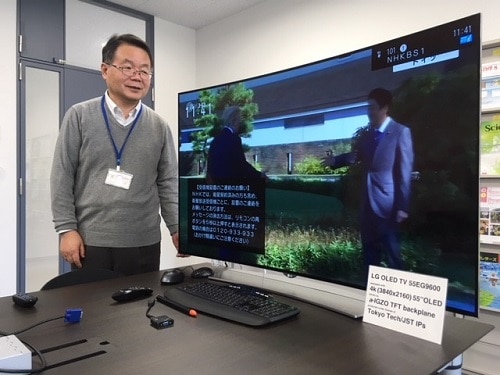
By Michael Banks in Tokyo, Japan
This morning I took the train to the Tokyo Institute of Technology, which lies about 10 km south-west of Tokyo.
I met with Hideo Hosono who rose to fame almost a decade ago when he found a new class of superconductors known as iron pnictides.
In a 2008 paper, Hosono and colleagues discovered superconductivity in LaOFeAs at 26 K. The crystalline material comprises layers of lanthanum and oxygen sandwiched between layers of iron and arsenic — and is doped with fluoride ions.
It opened up a new avenue of research in superconductivity – a topic that was getting rather stagnant following the excitement of the cuprate materials in the late 1980s.
While the structure of iron-based superconductors was already published, nothing was known about their physical properties. While Hosono admits that it was initially tricky to synthesis such materials he always thought that they would exhibit superconductivity.
Indeed, the discovery led to a flurry of research including the claim of superconductivity exceeding 100 K in single layers of FeSe films on doped strontium titanate substrates.
Yet despite almost a decade of effort, Hosono says there is more that needs to be done. “There is still interesting physics in these systems that needs to be worked out,” he says. “[Iron-based superconductors] have turned out to be much more complex than the cuprates.”
So what does the future hold for superconductivity with no new materials on the horizon? “If I could predict the future I would,” he says. “But it is impossible to predict what might come next.”
Whatever that might be, the next breakthrough is likely to come from China, which Hosono says is aggressively pursuing research in this area at the expense of the US and Europe where funding is limited.
On top of his research in superconductivity, Hosono has made breakthroughs in other areas too. This includes thin-film transistors (TFT) that can be used in organic light-emitting diodes (OLEDs). He showed me an OLED TV (see image above) that was made with a TFT material he pioneered – indium gallium zinc oxide. Indeed, multiple firms are producing TVs with this material including LG, Samsung and Sony.
So does he have such a TV at home? “I have an LCD,” he says. “I am waiting for the price of OLED TVs to come down before I buy.”
- See “A superconducting surprise comes of age” by Hosono and Hideo Aoki of the University of Tokyo, which appeared in the February 2015 issue of Physics World.



